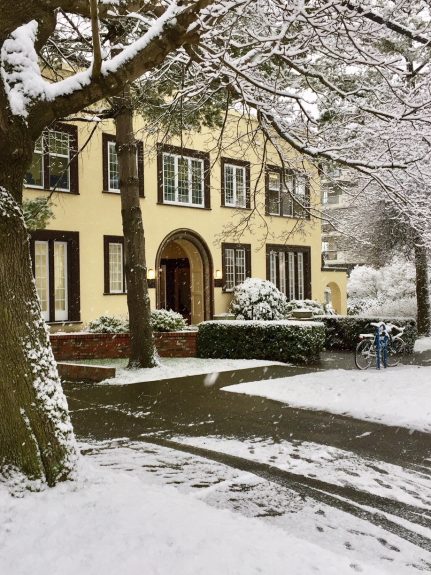The Court of Appeal has ruled on the question of the standard for determining consistency between Official Community Plans and Zoning Bylaws. The B.C. Supreme Court decision, in which the zoning bylaw was found not to be inconsistent with the Official Community Plan, was discussed in an article in Logo Notebook in the Spring of 2011.
In November 2011, the B.C. Court of Appeal upheld the decision of the Chambers Judge and confirmed that the zoning bylaw that had been adopted by the District Council did not offend the requirement in section 884(2) of the Local Government Act that bylaws adopted after the adoption of an Official Community Plan must be consistent with the plan. The petitioners sought to quash the bylaw on the basis of inconsistency between the Official Community Plan and the regional context statement and inconsistency with the Capital Regional District’s Regional Growth Strategy. The Chambers Judge considered the tests for consistency that had been articulated by the courts in other decisions, and in particular with the test that provided that a zoning bylaw would only be found to be inconsistent with an Official Community Plan if it was “in absolute and direct collision” with an Official Community Plan and how that related to whether a bylaw was “consistent” with an Official Community Plan.
The court noted that as a general principle, an Official Community Plan is a document of “long term vision” or “philosophy” and accordingly “cannot and should not be construed with the scrutiny accorded to a statute” except where the Official Community Plan contains a specific rule, such as one establishing a minimum parcel size for subdivision. In that case a subsequent zoning bylaw that creates a new minimum parcel size that is inconsistent with the clearly enunciated vision, will be “clearly in conflict”.
The court rejected the petitioner’s argument and stated the following:
“Very little is actually ‘prohibited’, and the definitions of various terms of art used in the plan leave municipal councils with some latitude in practical application. That is the case with respect to the terms ‘Rural’, ‘Rural Residential’, and ‘Large Lots’, for example. They are not defined with the exactitude of a zoning bylaw, and thus encompass a range of alternatives.”
On the question of standard of review, the court ruled that the standard of review for a decision of this nature was one of “reasonableness”, a test which has been the subject of some considerable judicial commentary, including most recently by the Supreme Court of Canada in Catalyst Paper Corporation v. North Cowichan (District) 2012 SCC 2. Applying the reasonableness test in this case, the court found that judged on a standard of reasonableness, the council was permitted to weigh the various environmental, economic and social goals in coming to a conclusion that the zoning bylaw was consistent with the Official Community Plan vision for rural lands.
The facts of the case are interesting as well in that they involve not only the zoning bylaw, but also a 219 covenant that was taken as part of the rezoning process. The lower court decision approached the issue on the basis that the 219 covenant could be seen as part of the circumstances used to determine whether or not there was consistency between the subsequent zoning bylaw and the Official Community Plan, and this was not challenged by the appellants on appeal.


